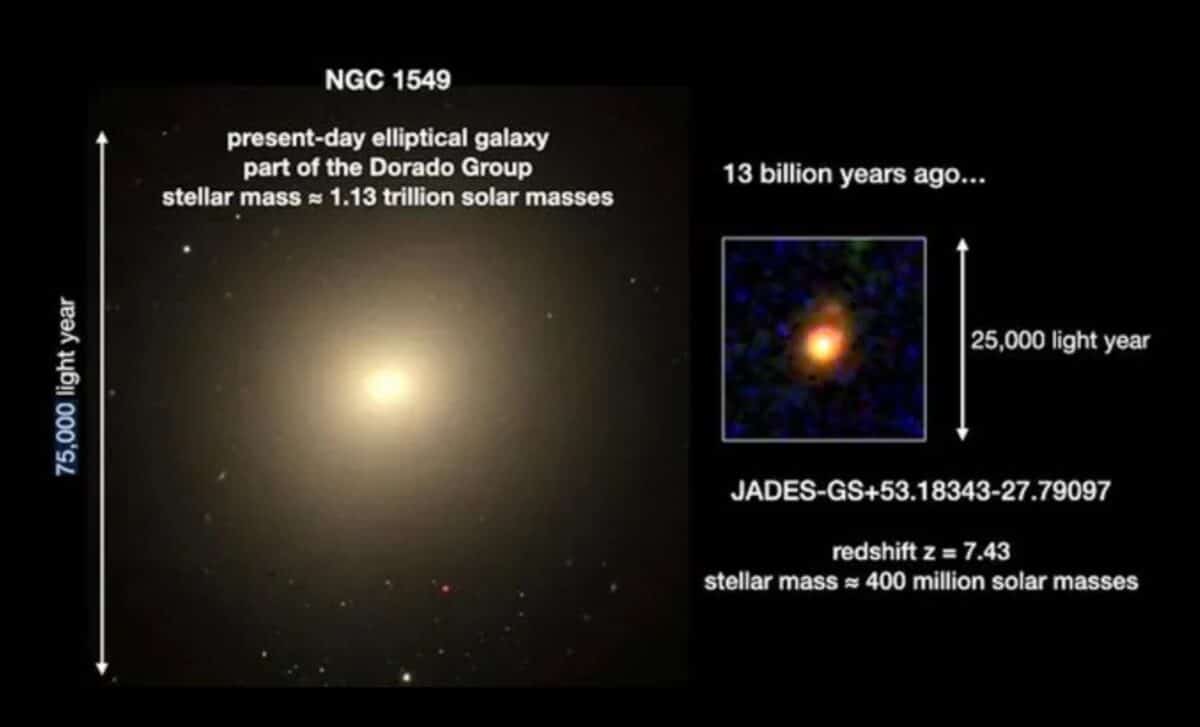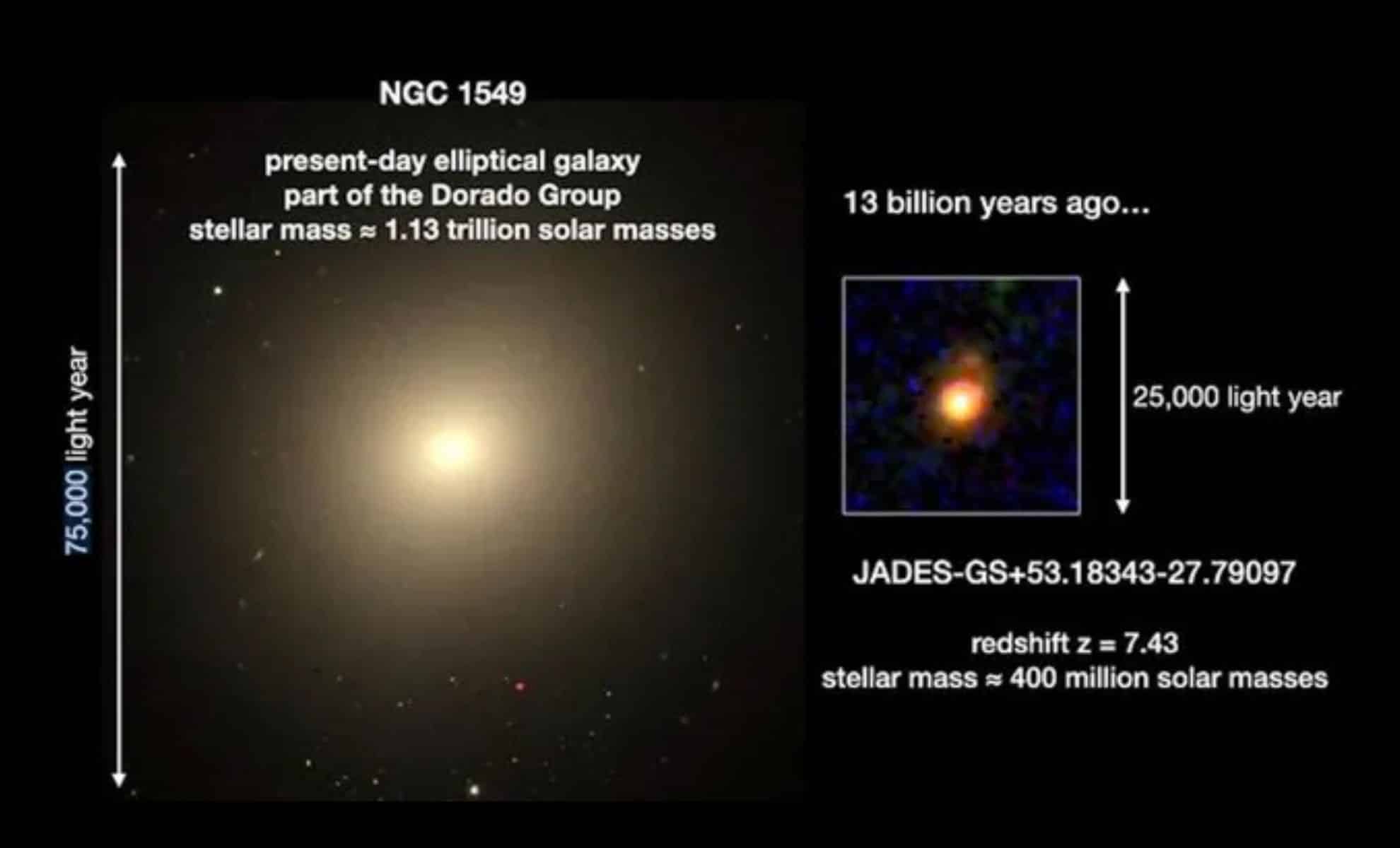Astronomers have made an exciting discovery about the early universe using the James Webb Space Telescope (JWST). The telescope has observed a galaxy forming stars in an unexpected pattern, only 700 million years after the Big Bang. The galaxy shows evidence of inside-out growth, a phenomenon where stars form more actively on the outskirts rather than at the core—challenging our current understanding of how galaxies grow. This finding is part of the JWST Advanced Extragalactic Survey (JADES), which aims to investigate galaxies from the earliest epochs of the universe.
James Webb Telescope Uncovers “Inside-Out” Galaxy Growth in the Early Universe

Astronomers have made an exciting discovery about the early universe using the James Webb Space Telescope (JWST).
The telescope has observed a galaxy forming stars in an unexpected pattern, only 700 million years after the Big Bang. The galaxy shows evidence of inside-out growth, a phenomenon where stars form more actively on the outskirts rather than at the core—challenging our current understanding of how galaxies grow. This finding is part of the JWST Advanced Extragalactic Survey (JADES), which aims to investigate galaxies from the earliest epochs of the universe.
Inside-out Star Formation Confirmed in Early Galaxies
The galaxy studied, which is much smaller than the Milky Way, was found to be growing from the inside out. This means its star formation is accelerating in the outer regions, while the core has already formed a dense collection of older stars. Although this galaxy is only a fraction of the size of our own, it appears surprisingly mature for its age. Sandro Tacchella, co-author of the study from the University of Cambridge, explained, "You expect galaxies to start small as gas clouds collapse under their own gravity, forming dense cores of stars." He compared this early phase of a galaxy’s life to a spinning figure skater, gathering momentum as it pulls in gas from larger distances.
This process has been theorized before but was only confirmed with the capabilities of the James Webb Space Telescope. Previous observations lacked the sensitivity to detect these subtle patterns so early in the universe’s history. William Baker, another study co-author, highlighted how transformative JWST is: "It’s like being able to check your homework." For the first time, astronomers can compare their theoretical models with real data from over 13 billion years ago.
The Mechanism Driving Galaxy Growth in the Early Universe
The researchers used stellar population modeling to study the light emitted by the galaxy at different wavelengths. By examining the balance between younger and older stars, they could estimate both the stellar mass and the rate of star formation. Most striking was the discovery that while the galaxy has a dense core, the majority of star formation is occurring in the outskirts, with the galaxy doubling its stellar mass roughly every 10 million years. In contrast, the Milky Way doubles its mass over a much longer period—around 10 billion years.
Astronomers believe this rapid star formation in the outer regions suggests the galaxy has a rich supply of gas, allowing it to continue expanding. "The density of the core and the rate of star formation indicate this galaxy is thriving with gas," Tacchella noted. This discovery hints at potentially different conditions in the early universe that allowed such rapid development.
Another surprising aspect of the study was the comparison between this early galaxy and massive elliptical galaxies seen today, which are a thousand times more massive but share a similar density in their cores. These findings suggest that star formation mechanisms may have been different in the early universe, or perhaps that galaxies undergo significant transformations over billions of years.
Implications for Galaxy Evolution and Future Research
The discovery of this inside-out growth pattern raises important questions about the evolution of galaxies. Tacchella and his team are now analyzing data from other early galaxies to determine if this pattern is universal or unique to this specific galaxy. "Were all galaxies like this one? Or is this just one particular case?" Tacchella asked. By studying other galaxies across different periods of cosmic history, astronomers hope to reconstruct the full lifecycle of galaxies, from their formation to their present state.
This study is just one example of how the James Webb Space Telescope is revolutionizing our understanding of the universe. By peering into the distant past, JWST is providing astronomers with the data they need to explore how galaxies like the Milky Way grew into the massive structures we observe today. The ability to observe galaxies billions of years ago opens up new avenues of research into the formation of stars, galactic cores, and the accretion of gas that fuels star formation.
Tacchella emphasized the broader impact of these discoveries: "With JWST, we can now probe the first billion years of cosmic history, which opens up all kinds of new questions about how galaxies evolve." The next step for researchers will be to determine whether other galaxies from this early period share the same growth patterns, potentially reshaping our understanding of galactic evolution.



